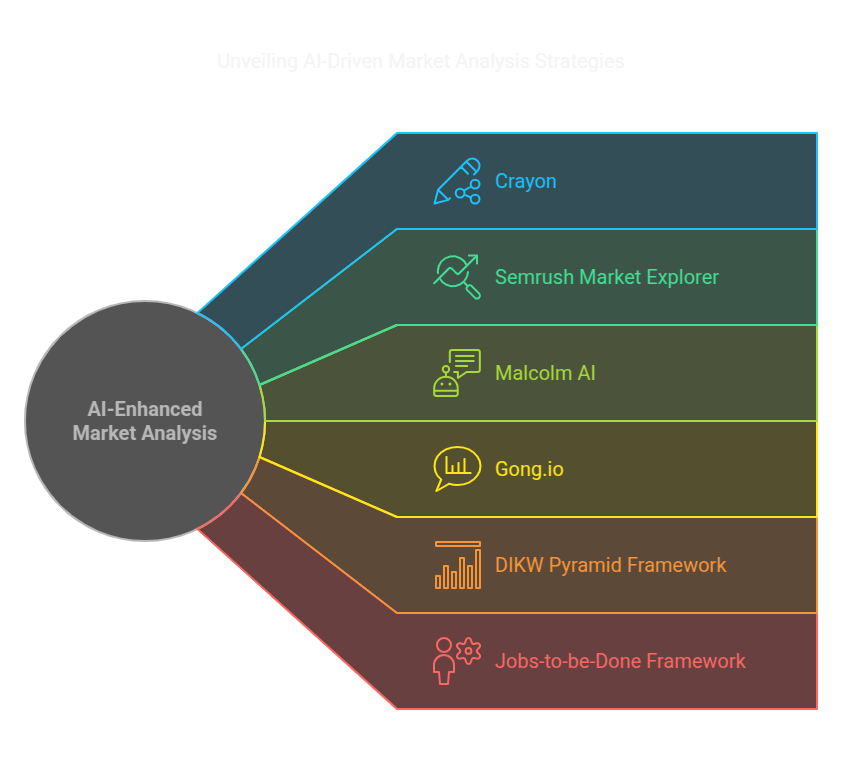Did you know that 72% of marketing leaders struggle to extract actionable insights from their market research data? Imagine having a powerful AI companion that transforms complex market information into crystal-clear strategic guidance, helping you design offers that resonate precisely with your target audience.
B2B tech and SaaS product managers face a constant challenge: understanding rapidly evolving market dynamics while developing compelling, competitive offerings. Traditional market research methods are often time-consuming, expensive, and fail to capture the nuanced signals that differentiate successful products from mediocre ones. The result? Strategies that miss the mark and products that struggle to gain traction.
AI-powered analytical tools are revolutionizing how companies approach market analysis, enabling unprecedented depth of insight and speed of strategic decision-making. By leveraging advanced algorithms and machine learning, these tools can uncover hidden market trends, predict customer preferences, and provide data-driven recommendations that turn market research from a guessing game into a precise science.
AI-powered market analysis represents a sophisticated approach to gathering, processing, and interpreting market intelligence using advanced machine learning algorithms and data analytics techniques. These tools go beyond traditional research methods by automatically scanning vast amounts of structured and unstructured data from multiple sources—including social media, industry reports, customer feedback, and competitive intelligence—to generate comprehensive market insights.
For B2B tech and SaaS product managers, AI-driven market analysis becomes a strategic differentiator. It enables rapid identification of emerging market trends, customer pain points, and competitive gaps that might otherwise remain hidden. By transforming raw data into actionable intelligence, these tools help teams make informed decisions about product positioning, feature development, and go-to-market strategies with unprecedented speed and accuracy.
The core value lies in moving from reactive to predictive market understanding—shifting from simply observing market conditions to anticipating and shaping them proactively. This approach empowers businesses to design offers that are not just responsive to current market demands but strategically aligned with future customer needs.
For B2B tech and SaaS companies, market analysis is no longer a luxury but a critical survival strategy. AI tools bridge the gap between raw data and strategic insight, transforming how businesses understand and respond to market dynamics.
Many businesses stumble by:
The real competitive advantage emerges not just from having AI tools, but from understanding how to strategically leverage their capabilities to drive meaningful business decisions.

Begin by evaluating AI-powered market research platforms that align with your specific business needs. Focus on tools that offer:
Pro Tips:
Mistakes to Avoid:
Crystallize your market analysis goals before diving into data collection. Develop precise research questions that address specific business challenges or growth opportunities.
Pro Tips:
Mistakes to Avoid:
Leverage AI tools to aggregate data from multiple sources, including:
Pro Tips:
Mistakes to Avoid:
Transform raw data into strategic insights using AI's predictive analytics and machine learning capabilities. Focus on extracting:
Pro Tips:
Mistakes to Avoid:

Crayon
A competitive intelligence platform that uses AI to track and analyze competitor movements across digital channels. Ideal for B2B tech companies seeking comprehensive market intelligence with real-time insights.
Semrush Market Explorer
Delivers advanced market research capabilities with AI-powered trend analysis and competitor benchmarking. Perfect for product managers looking to understand market dynamics and potential growth opportunities.
Malcolm AI
Specializes in customer feedback analysis, transforming unstructured data from reviews, social media, and support channels into actionable strategic insights for product development teams.
Gong.io
An AI-powered revenue intelligence platform that analyzes sales conversations and customer interactions to uncover market trends and customer preferences for SaaS companies.
Successful implementation of AI market analysis requires more than just advanced tools—it demands structured approaches that maximize technological capabilities.
DIKW Pyramid Framework
Transforms raw data into wisdom by progressing through stages: Data → Information → Knowledge → Wisdom. AI tools excel at rapidly moving through these stages, providing contextual market insights.
Jobs-to-be-Done (JTBD) Framework
Uses AI to deeply understand customer motivations by analyzing why customers "hire" specific products to solve their problems. This framework helps create more targeted and resonant market offerings.
Blue Ocean Strategy Framework
AI-powered tools can identify untapped market spaces by analyzing competitive landscapes and revealing potential innovation opportunities that traditional research might miss.
By combining these sophisticated tools and frameworks, B2B tech teams can transform market research from a reactive process to a strategic, forward-looking capability that drives meaningful business innovation.
As marketing strategists and product managers in the B2B tech and SaaS ecosystem, embracing AI-powered market analysis tools represents a transformative approach to understanding complex market dynamics. By strategically integrating machine learning algorithms, natural language processing, and predictive analytics, professionals can move beyond traditional research methods to generate nuanced, real-time insights that drive competitive differentiation. The key lies not just in adopting these technologies, but in developing a sophisticated, iterative approach that combines AI-generated data with human expertise, critical thinking, and strategic interpretation. As the market intelligence landscape continues to evolve, those who can effectively harness these advanced AI tools will be positioned to create more targeted, responsive, and innovative market offerings that anticipate customer needs and outmaneuver competitive challenges.